MICROTEST offers comprehensive test solutions from power to component measurement.
2024/10/29 | By Andrew Hsu | MICROTEST CORPORATION.MICROTEST offers comprehensive test solutions from power to component measurement
As 136 countries and the European Union (EU) pledged to achieve net-zero emissions, electric vehicles (EVs) and energy-efficient appliances have emerged as critical tools in the fight against climate change. The widespread adoption of EVs significantly lowers the carbon footprint of traditional fuel-based transportation, while energy-efficient devices enable both households and businesses to cut electricity consumption, reduce dependence on fossil fuels, and lower overall carbon emissions.
A key challenge lies in optimizing and designing these products to enhance performance while minimizing energy losses. This is where rigorous inspection and analysis play a vital role. By employing high-precision instruments for testing and verification, the green technology sector can ensure that its products meet the highest standards of safety and reliability, paving the way for a more sustainable future.
Whether in standby or full operation, the MICROTEST 7140 boosts energy efficiency in home appliances.
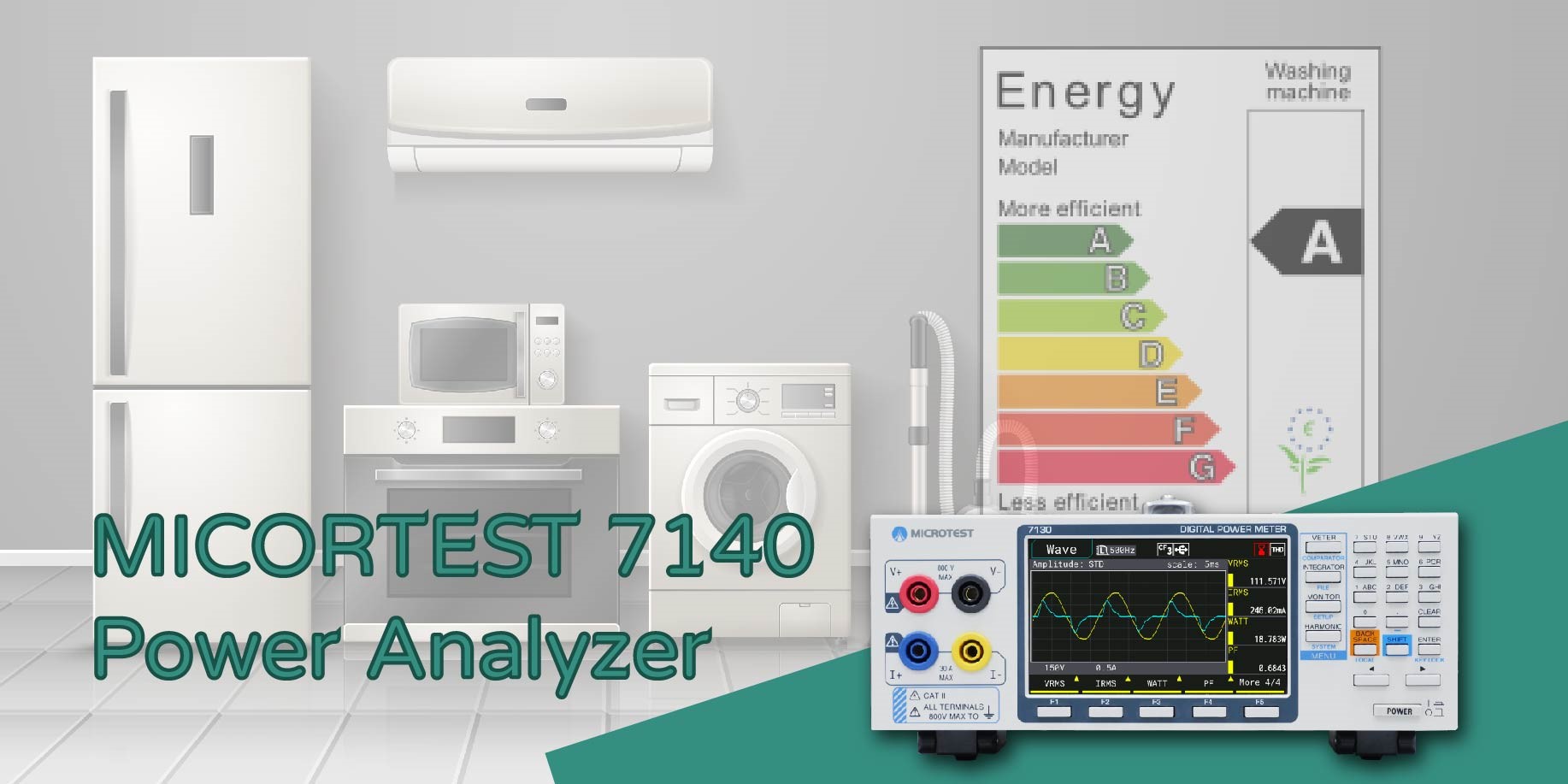
MICROTEST 7140 supports up to 800V input voltage and 30A input current, with 100th-order Harmonic Analysis. It offers a testing bandwidth from DC to 100kHz, a high-speed sampling rate of 500kSPS, and a power measurement accuracy of ±0.05%.
Amid the increasing urgency of climate change, over 130 nations worldwide have committed to achieving net-zero emissions by 2050. With home appliances ranking among the largest contributors to daily energy consumption, manufacturers are prioritizing the development of energy-efficient smart appliances to enhance their products' energy performance.
The evaluation of the Energy Efficiency Ratio (EER) plays a crucial role in the design and testing of air conditioners, serving as a key indicator of energy-saving performance. EER is determined by the ratio of output power to input power, with “input power” being the critical parameter in this calculation. It reflects the energy consumption of the air conditioner during operation; thus, a lower input power corresponds to a higher EER, indicating a more energy-efficient design.
Accurate verification and measurement require a high-precision power analyzer to effectively gauge input power, directly influencing the reliability of the EER calculation. In the realm of inverter technology, appliances such as inverter washing machines, air conditioners, and refrigerators optimize energy use by adjusting motor speed through the control of voltage and frequency. This stepless regulation prevents operation under low load conditions, enhancing efficiency and reducing energy consumption.
However, these inverter appliances frequently experience changing operating conditions, causing operating currents to fluctuate dramatically—from tens of amperes to mere milliamperes. This variability complicates power measurement, as waveform distortion necessitates a highly accurate power analyzer to reliably assess the power values of these inverter appliances.
In the green technology sector, MICROTEST's latest innovation, the 7140 Power Analyzer, sets a new standard for precise and reliable power testing. With a measurement accuracy of ±0.05%, a broad testing bandwidth from DC, 15Hz to 100kHz, and a high-speed sampling rate of 500KS/s, the 7140 delivers comprehensive power analysis. Its ability to display waveform graphs, trend graphs, and bar graphs allows for precise examination of high harmonics in distorted waveforms, accurately capturing instantaneous current changes and assessing the power quality of inverter appliances under various operating conditions.
The 7140 Power Analyzer also supports up to 100 levels of harmonic analysis with automatic range adjustment, enhancing the accuracy and efficiency of power measurements for inverter appliances. This advanced capability is crucial for engineers seeking to optimize performance and energy efficiency.
Regarding standby power consumption, the International Electrotechnical Commission (IEC) set a Zero Standby Power standard in 2011, aiming for electronic devices to have near-zero power consumption in standby mode, ideally below 5mW. The 7140 meets this challenge with a minimum current range of 5mA and a power resolution of 10µW, enabling the detection of even the smallest power fluctuations. This precision helps energy-efficient appliance manufacturers meet international standards and optimize their products for better energy performance.
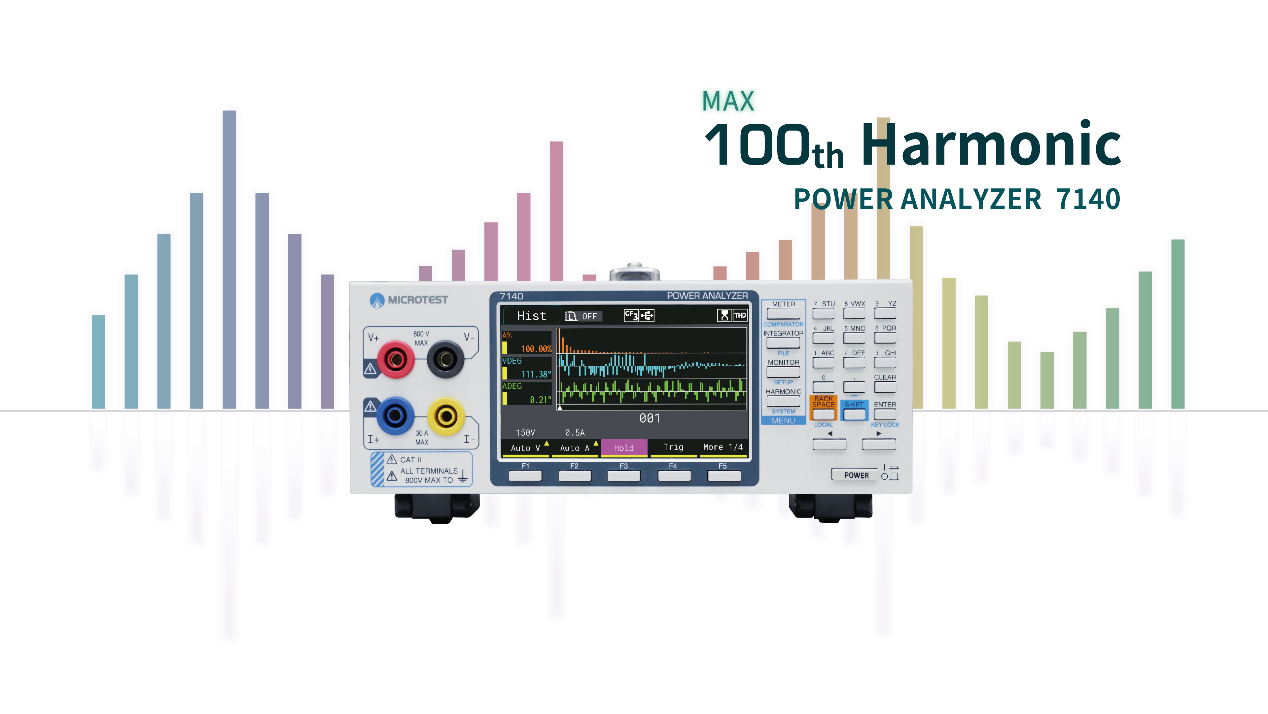
In any background mode, integral measurements are performed simultaneously with harmonic analysis.
MICROTEST 7140 Power Analyzer excels in harmonic analysis, supporting up to 100 levels of harmonic evaluation. This capability effectively addresses the inaccuracies in inverter technology testing that arise due to harmonic distortion. With a high-speed data update rate of 100ms, the 7140 enables precise power testing on the input side of home appliances, meeting the stringent reliability standards required by energy-efficient home appliance certification laboratories. This makes the 7140 an essential tool for ensuring the accuracy and reliability of energy-saving appliance performance assessments.

800kW supercharger testing, with precision verification of magnetic saturation and temperature rise currents.
In power supply design, accurately verifying and testing the saturation current (Isat) and RMS current (Irms) of magnetic components is essential for ensuring reliable performance. These tests can be conducted using the DC superposition method, and the MICROTEST DC Bias Current Test System 6243H+6632S offers a robust solution for this process. With a current output of up to 640A and the ability to perform current scans, this system allows for precise analysis of inductance drop caused by increasing current, enabling engineers to accurately verify both saturation and RMS current characteristics.
To address the challenge of slow EV charging, high-power supercharging technology has been developed, which increases the voltage and current at charging stations to significantly improve charging efficiency and reduce charging times. Compared to traditional AC/DC charging, DC charging offers a much faster solution.
In September 2023, China's Ministry of Industry and Information Technology introduced two new electric vehicle charging standards (GB/T20234.1-2023 and GB/T20234.3-2023), raising the maximum charging current from 250A to 800A and boosting charging power to 800kW. These standards also ensure backward compatibility between new and older charging interfaces, facilitating a smoother transition to high-power charging.
This 800kW supercharging technology has ushered in a new era of ultra-fast EV charging, cutting charging times down to mere minutes. However, such high-power charging presents significant heating challenges. In an 800kW supercharging system, EV power modules use a modular design, typically requiring 26 sets of 30kW power modules. The compact design of these modules makes heat dissipation difficult in confined spaces, leading to increased temperatures that can compromise component reliability and system performance. Additionally, the magnetic components within these power modules generate significant heat during operation, further straining the system and reducing efficiency. Currently, only liquid cooling technology is capable of efficiently dissipating heat from the vehicle.
Optimizing and designing magnetic components from cores to windings is crucial for achieving 800kW high-power ultra-fast charging. The saturation flux density and permeability of the core material determine the amount of flux the core can handle under specific magnetic field strengths. High permeability materials easily saturate at low magnetic field strengths, and high currents cause a sharp increase in flux density, leading the core into saturation. High-frequency operation generates strong magnetic field variations, increasing the risk of core saturation. Additionally, rising operating temperatures reduce permeability, making cores more prone to saturation. When inductance decreases, filtering effectiveness weakens, common mode noise increases, transformer conversion efficiency deteriorates, and the stability and reliability of the entire charging system are affected.
In high-power ultra-fast charging systems, magnetic components like power factor correction (PFC) inductors, LLC transformers, and electronic filters play a crucial role in power conversion, particularly under Continuous Current Mode (CCM). In CCM, the current continuously flows through the PFC inductor, which can lead to over-magnetization of the core. This over-magnetization drives the core into magnetic saturation, causing a significant drop in inductance. As a result, the efficiency of energy storage and conversion is severely reduced.
Moreover, the sustained high current increases heat generation in these magnetic components, accelerating their aging process. This not only shortens the lifespan of the power modules but also compromises the reliability and stability of the entire charging system.
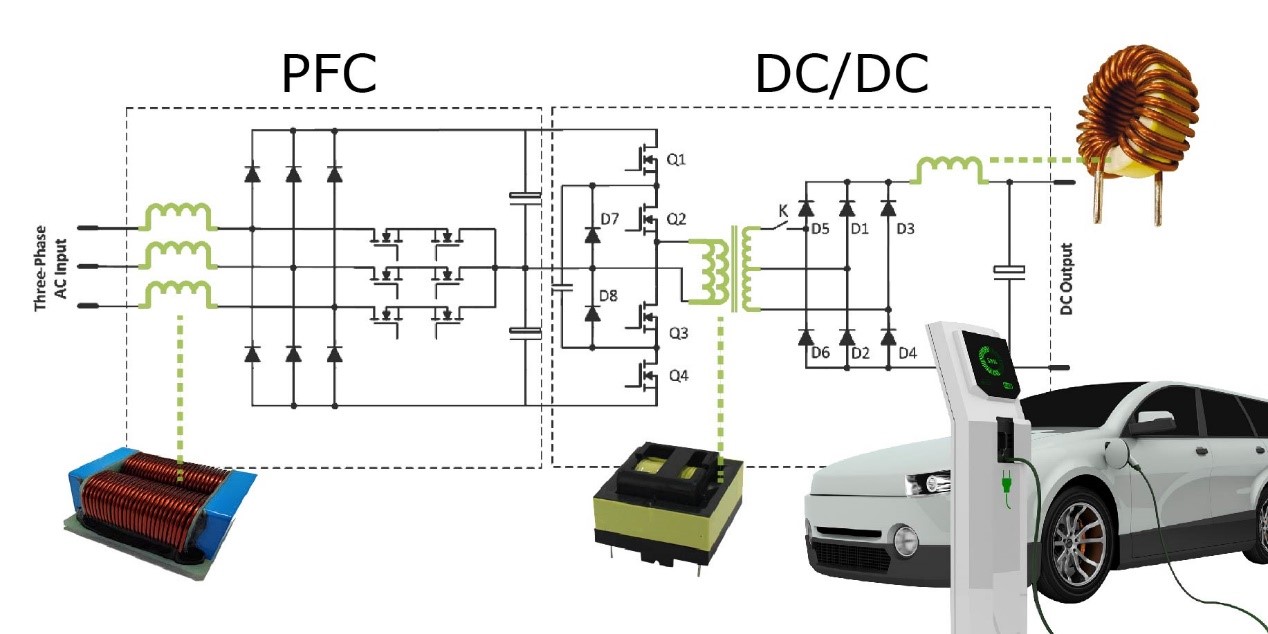
Magnetic saturation and overheating significantly impact the lifespan of magnetic components, necessitating the development of two key indicators: saturation current (Isat) and RMS current (Irms). These indicators ensure that magnetic components operate safely without the risk of saturation or overheating under normal conditions.
Saturation current (Isat) measures the decrease in inductance as an indicator of ampere capacity. It is typically defined as the current level at which inductance drops by 20-30%. Additionally, the inductor’s parasitic DC resistance causes its internal temperature to rise as the current increases during operation.
RMS current (Irms) is defined by the current level at which the self-heating of the inductor does not cause the temperature to exceed 20℃ or 40℃. Staying within this current range ensures the inductor remains protected from overheating.
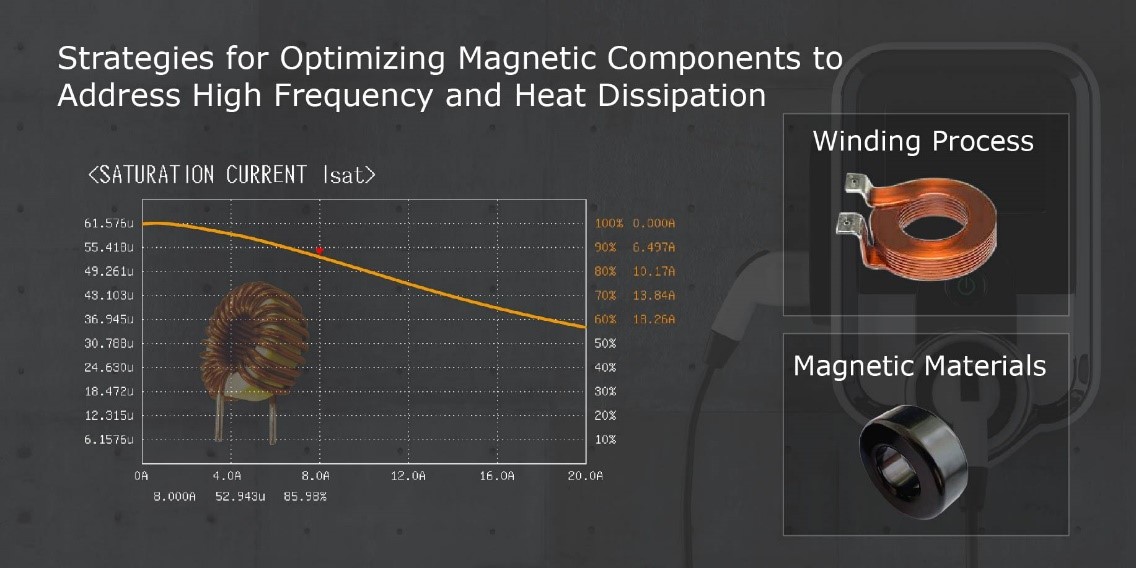
Supports Saturation Current (Isat) scanning analysis, displayed as a percentage decrease in inductance value.
The system integrates the Impedance Analyzer 6632S, which works in tandem with the DC Bias Current Source 6243H, supporting a frequency response range of 100Hz to 10MHz. In graphical analysis mode, the system provides detailed curves that illustrate the characteristics of saturation and RMS current. Additionally, the built-in Relative Permeability (μr) feature in the test parameter menu helps engineers assess the performance of magnetic saturation and core permeability, allowing for a thorough analysis of magnetic material properties.
For engineers designing 800kW ultra-fast charging power supplies, the MICROTEST DC Bias Current Test System 6243H+6632S serves as an indispensable measurement tool.
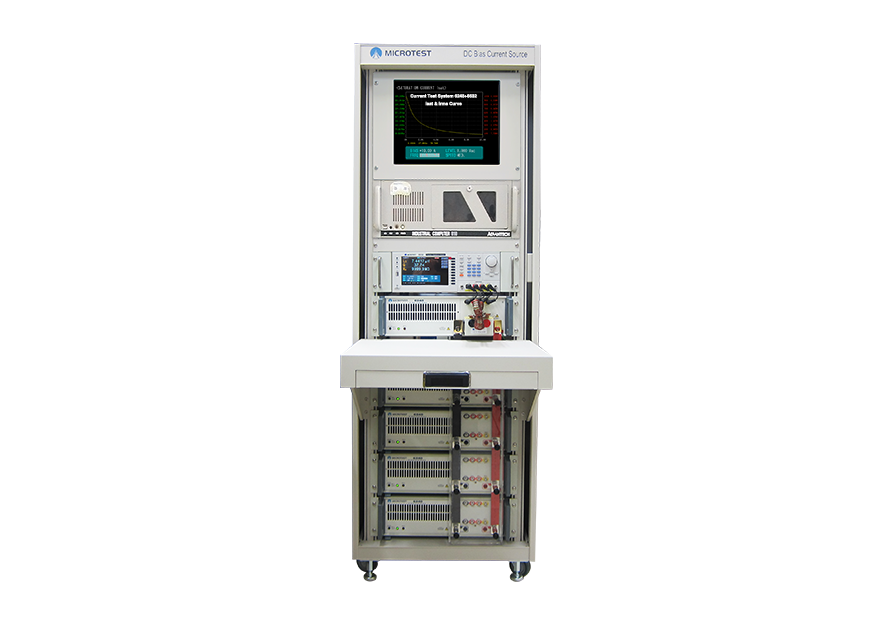
Frequency response: 100Hz-10MHz, Maximum output current: 640A | 6243H+6632
MICROTEST, a leader in precision electronic measuring instruments and automated test equipment, is dedicated to helping customers overcome design and production quality testing challenges.
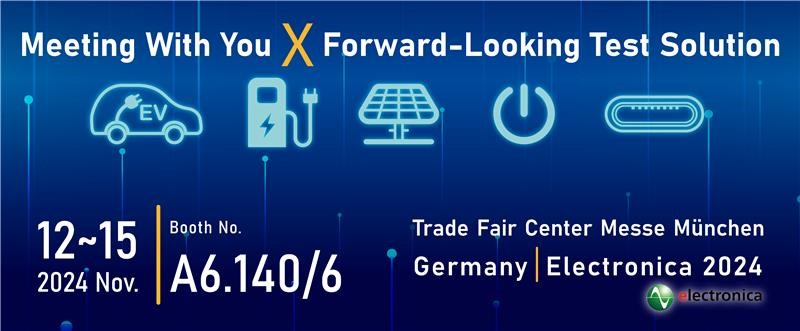
MICROTEST: A6.140/6
Show Info:
2024 Electronica (2024/11/12~11/15)
MICROTEST: A6.140/6
We cordially invite you to visit MICROTEST's booth at electronica 2024. Join us to explore forward-thinking measurement solutions tailored to the evolving demands of smart and electrified technologies. We look forward to engaging with you and addressing your testing needs as we move toward a more innovative future.




